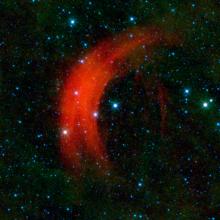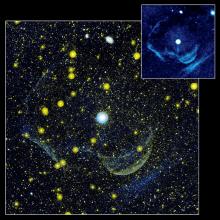Listen to today's episode of StarDate on the web the same day it airs in high-quality streaming audio without any extra ads or announcements. Choose a $8 one-month pass, or listen every day for a year for just $30.
You are here
The Camel Leopard
You might expect a constellation that bears the names of three different animals to be a bold one. Unfortunately, though, Camelopardalis isn’t. It is one of the largest constellations, covering a large wedge of the northern sky. But it just isn’t very bold. All of its stars are so faint that you have to get away from city lights to see them.
A literal translation of “Camelopardalis” is “the camel leopard.” And one astronomer who wrote about it soon after its creation in the early 1600s said that it was a camel.
But the writer was a bit confused. That’s because “Camelopardalis” is a form of the Latin word for “giraffe” — a creature that appears to combine the long neck of the camel with the spots of the leopard.
For the casual skywatcher, the semantics probably are more interesting than the constellation itself. Its brightest star is only fourth magnitude — not bright enough to see from a light-polluted city, or even most suburbs.
The star is almost 900 light-years away. So the fact that it’s visible from any place on Earth with the unaided eye tells us that it’s quite impressive. It’s several times heavier than the Sun, and about 1500 times brighter — the brightest “spot” of the camel-leopard.
At this time of year, Camelopardalis is to the upper left of the North Star as darkness falls, so it’s in fine view. It wheels below the North Star later on, and is low above the northern horizon at first light.
Script by Damond Benningfield





